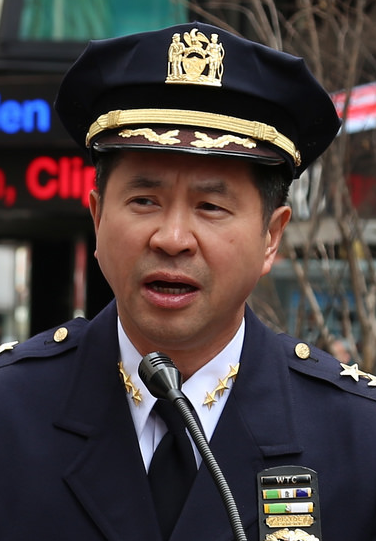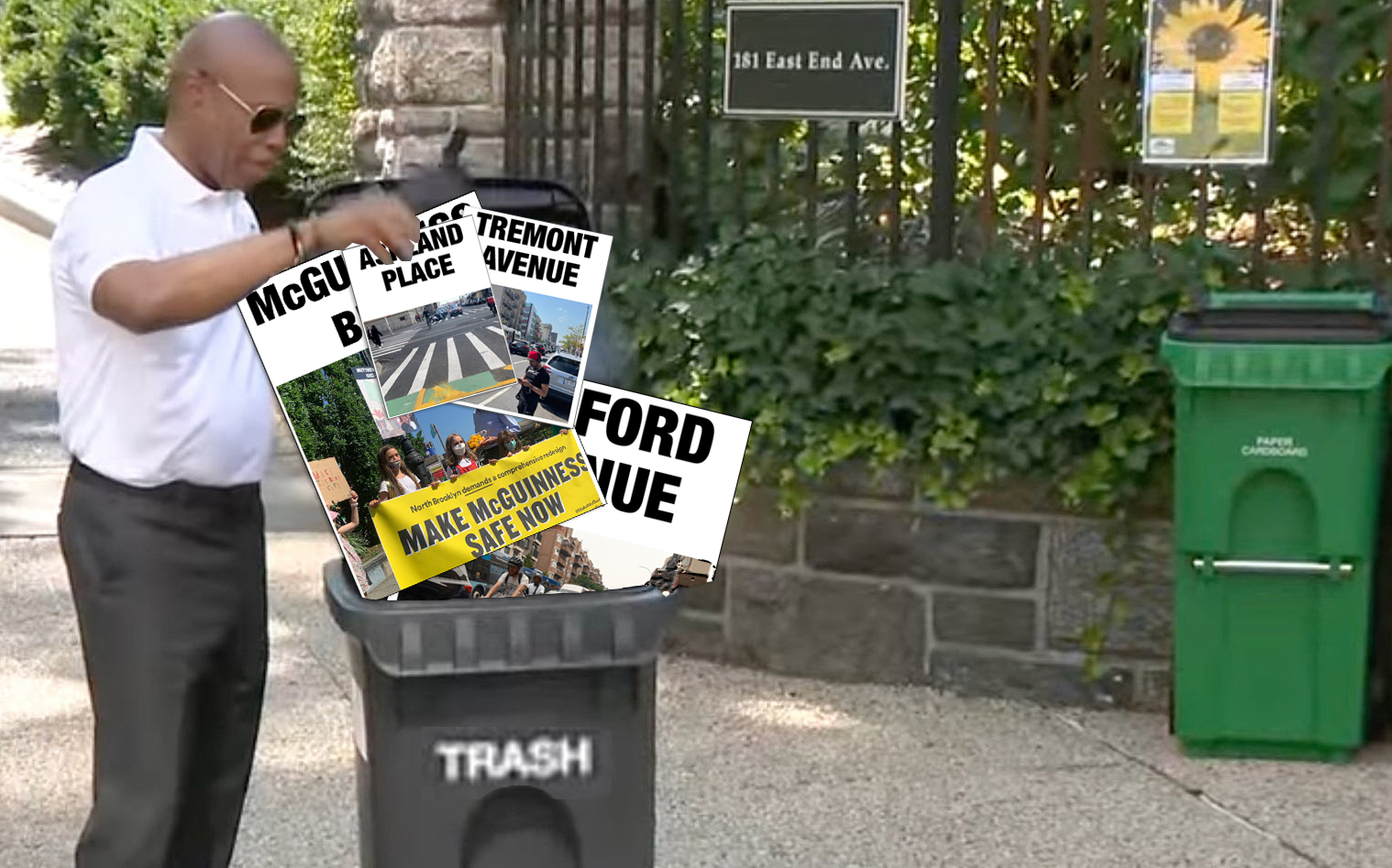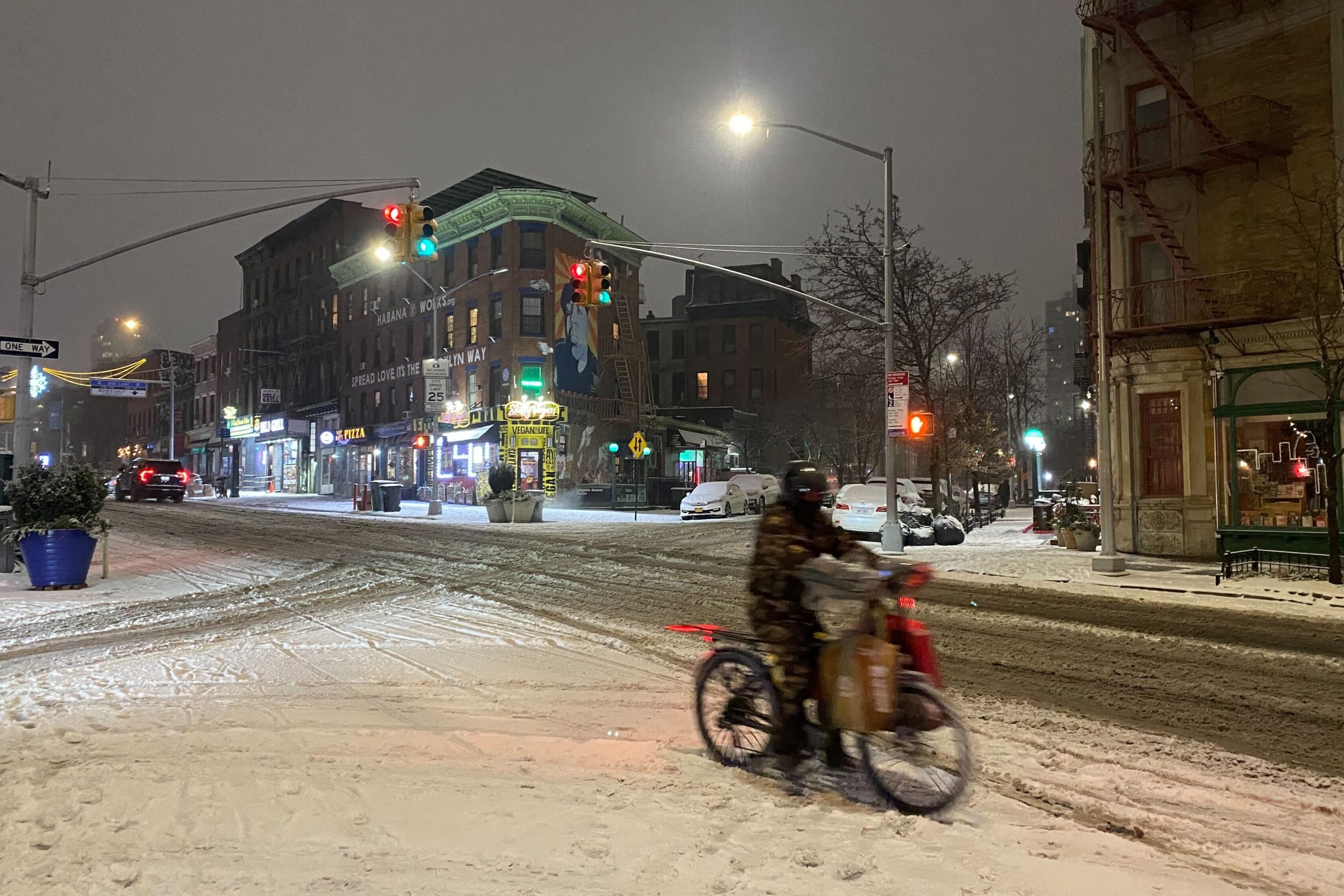At a press conference this morning unveiling a street safety redesign at 96th Street and Broadway on the Upper West Side, the first three questions from reporters were all about what the police are doing to deter jaywalking. So it was no surprise when, after a discussion of NYPD's crackdown this week on drivers who text and fail to yield to pedestrians, Juliet Papa of 1010 WINS cut right to the chase for her drive-time audience.

"Will texting pedestrians also be part of the crackdown?" she asked over the roar of trucks on Broadway. "I just find this is very motorist-driven. Pedestrians and bicyclists must abide by the law."
Setting aside that Papa implied texting while walking is a punishable offense (it is not), this was clearly an opportunity to explain street safety basics to the local press corps, and NYPD Chief of Transportation Thomas Chan hit his marks.
"Motorists are operating a 4,000 pound vehicle. And we cannot be distracted while we're operating that vehicle," he said. "When a collision occurs between a motorist and a pedestrian, the pedestrian loses 100 percent of the time. So again, it's very important that our motorists, who are obligated to be licensed, that they operate in a way that's not distracted."
Later, I asked Chan for more details about the department's enforcement efforts. Currently, monthly updates on moving violations are aggregated at the precinct level and released to the public in PDF and Excel documents. NYPD says it will step up enforcement along arterial slow zones, but there's no way for the public to track the department's progress on that promise.
Precincts often cite the number of tickets issued on a particular stretch of road at public meetings, and this type of information is part of Chan's weekly TrafficStat meetings. But Chan claimed that releasing geographically-tagged data on moving violations is beyond the department's current technical capabilities.
Whenever the department cites summonses issued on a specific street, officers are spending time tracking hand-written summonses, he said, rather than pulling information from a database. "Right now, we don't capture that type of information. It's not inputted into the computer by location in terms of where summonses are issued. That's something that we can possibly look at to develop," he said. "They would have to develop a whole system for that."
Last week, the department improved the way it releases crash data, showing individual entries updated daily in an easy-to-use format. Chan called it a "great start," so I asked if there are other traffic data improvements in the works.
"Not right now," he said.





